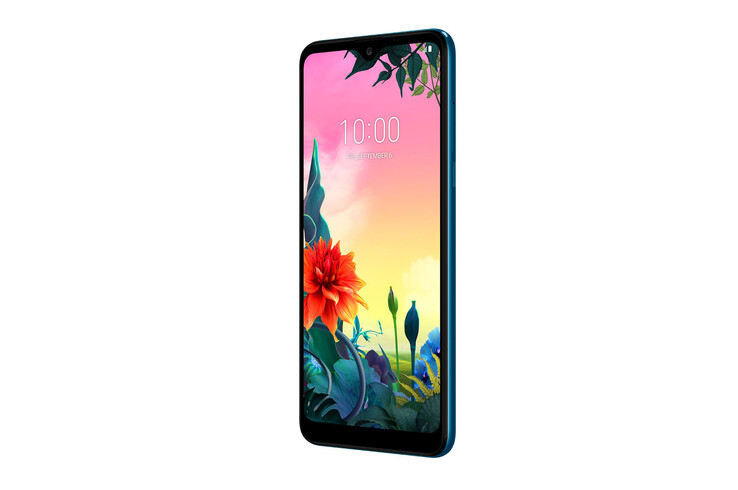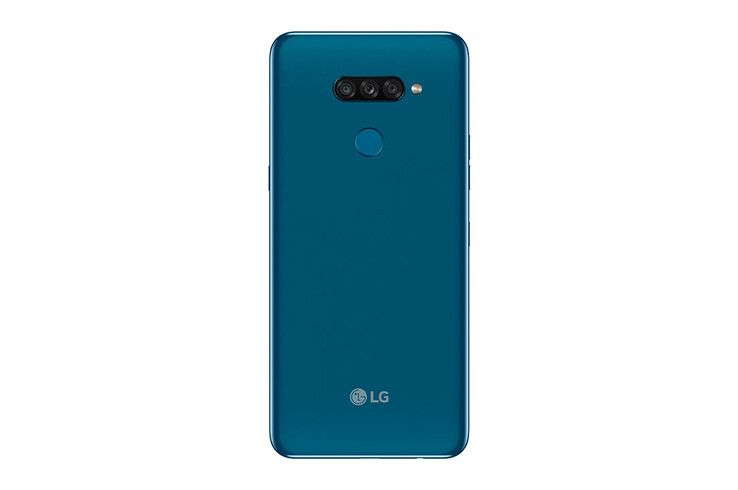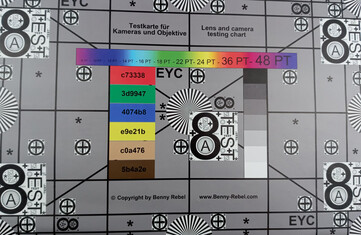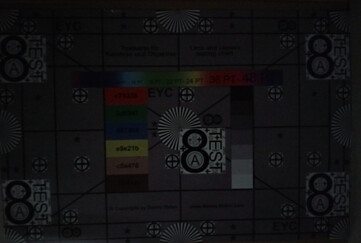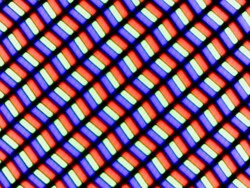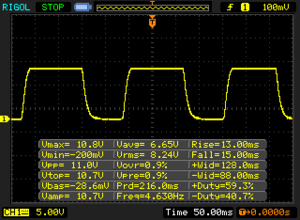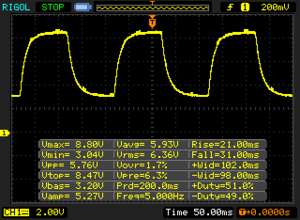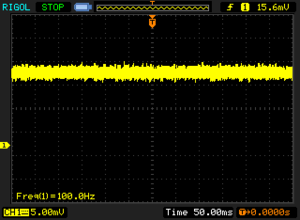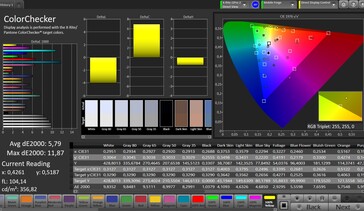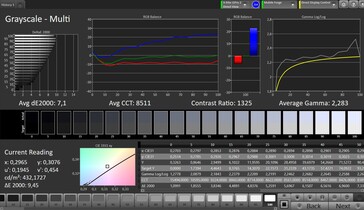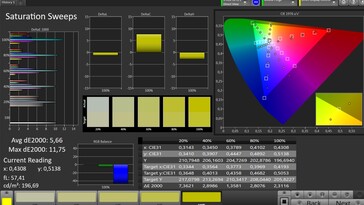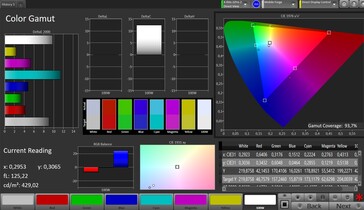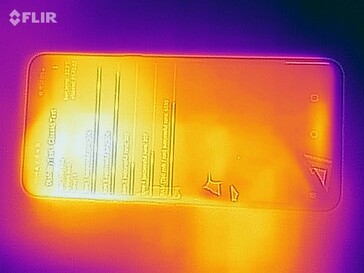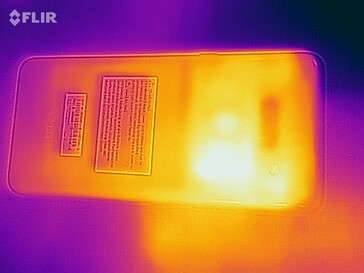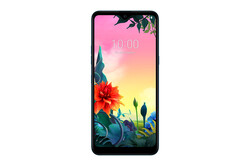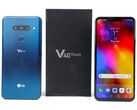LG K50S Smartphone Review - Now with three cameras
Comparison Devices
Bewertung | Rating Version | Datum | Modell | Gewicht | Laufwerk | Groesse | Aufloesung | Preis ab |
|---|---|---|---|---|---|---|---|---|
| 75.5 % v7 (old) | v7 (old) | 12 / 2019 | LG K50S Helio P22 MT6762, PowerVR GE8320 | 194 g | 32 GB eMMC Flash | 6.50" | 1560x720 | |
| 75 % v7 (old) | v7 (old) | 10 / 2019 | LG K50 Helio P22 MT6762, PowerVR GE8320 | 170 g | 32 GB eMMC Flash | 6.26" | 1520x720 | |
| 76.8 % v7 (old) | v7 (old) | 11 / 2019 | Motorola One Macro Helio P70, Mali-G72 MP3 | 186 g | 64 GB eMMC Flash | 6.20" | 1520x720 | |
| 79.2 % v7 (old) | v7 (old) | 11 / 2019 | Xiaomi Redmi Note 8 SD 665, Adreno 610 | 190 g | 128 GB eMMC Flash | 6.30" | 2340x1080 | |
| 75.5 % v7 (old) | v7 (old) | 07 / 2019 | Samsung Galaxy A20e Exynos 7884B, Mali-G71 MP2 | 141 g | 32 GB eMMC Flash | 5.80" | 1560x720 |
Case, Equipment and Operation - Proven design
In February at the MWC in Barcelona, LG had announced its new low-cost smartphone LG K50, and before the end of the year its successor was released: The LG K50S. For friends of large screens and modern design, it is worthwhile at first glance, but in the test we want to take a closer look.
In contrast to the smaller LG K40, the K50 was already equipped with a quite modern design with Waterdrop-Notch and LG doesn't change anything here with the successor. The case actually looks identical, apart from the third camera lens on the back: Furthermore, there is a metal frame and plastic on the back; blue and black are available as colors. The certification according to US-MIL-STD810G, which is supposed to provide a certain amount of protection against the blows and elements, has also remained the same, but the manufacturer is free to choose which tests to carry out and how, so it unfortunately doesn't say much. However, there are certainly changes in the size: The LG K50S has become a bit slimmer and considerably longer, in addition to 24 grams more weight, probably due to the larger battery.
Bluetooth 5.0 and NFC are on board, there is also a 3.5mm audio connection and, despite the modern design, a notification LED on the front. A dedicated microSD port is used to expand the mass memory. There are certainly devices in this price range that offer more than 32 GB of internal memory.
The LG K50S comes with WiFi 5 and knows how to use it, but we couldn't find a correspondingly higher transfer speed in the LG K50 with the same configuration. In our test with the reference router Linksys Nighthawk AX12, the K50S is significantly faster than most of the comparable devices, but also noticeably slower than the Xiaomi Redmi Note 8.
Control via the touchscreen is quite precise, the surface offers good gliding characteristics for the finger. As with almost all current LG phones, this model also has its own button for the Google Assistant.
| Networking | |
| iperf3 transmit AX12 | |
| Xiaomi Redmi Note 8 | |
| LG K50S | |
| LG K50 | |
| Motorola One Macro | |
| Samsung Galaxy A20e | |
| iperf3 receive AX12 | |
| Xiaomi Redmi Note 8 | |
| LG K50S | |
| Motorola One Macro | |
| Samsung Galaxy A20e | |
| LG K50 | |
Cameras - Triple camera in the LG K50S
13 megapixels are provided by both the main lens on the back and the selfie-cam on the front. At the back, as with the previous model, there is a 2 megapixel camera for depth of field, an additional wide-angle lens like the LG K40S is now also included, making the LG K50S a smartphone with an optical zoom, even if it only works in the direction of wide angle, so from the main lens' point of view you can only zoom out of the picture. Zooming in works only with digital zoom.
The light sensitivity of the main lens has also been increased in comparison to the LG K50, but overall the main lens takes decent pictures for its price range, slight pixel artifacts in the blue sky, a little too little dynamic in bright areas and a visible blue cast must be accepted. In dark situations, the autofocus is obviously difficult, which is a pity, as the dynamics are not that bad.
Videos can be recorded in 1080p at a maximum of 30 fps, the image quality is OK, but you can see clear steps when switching between different brightness levels.
The front camera offers good shots and even details are still clearly visible.
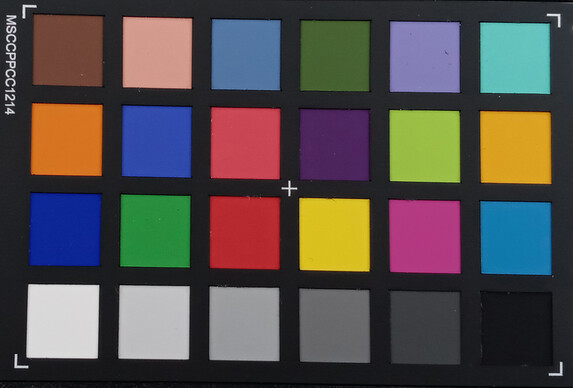

Display - Hardly any changes
The screen has been stretched a little bit compared to the predecessor and has a few more pixels here. The brightness is on a good level, but can't keep up with the very bright screens in the Motorola One Macro and Xiaomi Redmi Note 8.
On the other hand, the black value of 0.33 cd/m² is on a fairly good level. The color deviations turn out a bit higher than in many other models, though. Our test with the CalMAN software also reveals a strong blue cast.
| |||||||||||||||||||||||||
Brightness Distribution: 90 %
Center on Battery: 436 cd/m²
Contrast: 1473:1 (Black: 0.33 cd/m²)
ΔE Color 5.79 | 0.5-29.43 Ø4.83
ΔE Greyscale 7.1 | 0.09-98 Ø5.1
93.7% sRGB (Calman 2D)
Gamma: 2.283
| LG K50S IPS, 1560x720, 6.5" | LG K50 IPS, 1520x720, 6.3" | Motorola One Macro IPS, 1520x720, 6.2" | Xiaomi Redmi Note 8 IPS, 2340x1080, 6.3" | Samsung Galaxy A20e IPS, 1560x720, 5.8" | |
|---|---|---|---|---|---|
| Response Times | 35% | 23% | 11% | 21% | |
| Response Time Grey 50% / Grey 80% * | 52 ? | 38 ? 27% | 36 ? 31% | 49.6 ? 5% | 44.4 ? 15% |
| Response Time Black / White * | 28 ? | 16 ? 43% | 24 ? 14% | 23.6 ? 16% | 20.8 ? 26% |
| PWM Frequency | 100 ? | 100 | 463 ? | 349.7 ? | |
| Screen | 4% | 15% | 29% | -8% | |
| Brightness middle | 486 | 489 1% | 581 20% | 656 35% | 475 -2% |
| Brightness | 464 | 453 -2% | 565 22% | 643 39% | 473 2% |
| Brightness Distribution | 90 | 85 -6% | 92 2% | 95 6% | 93 3% |
| Black Level * | 0.33 | 0.42 -27% | 0.42 -27% | 0.54 -64% | 0.35 -6% |
| Contrast | 1473 | 1164 -21% | 1383 -6% | 1215 -18% | 1357 -8% |
| Colorchecker dE 2000 * | 5.79 | 4.75 18% | 4.3 26% | 1.1 81% | 6.8 -17% |
| Colorchecker dE 2000 max. * | 11.87 | 7.75 35% | 6.94 42% | 2.4 80% | 13.4 -13% |
| Greyscale dE 2000 * | 7.1 | 4.6 35% | 4.4 38% | 2.2 69% | 8.7 -23% |
| Gamma | 2.283 96% | 2.164 102% | 2.217 99% | 2.2 100% | 2.33 94% |
| CCT | 8511 76% | 7510 87% | 7067 92% | 6263 104% | 9385 69% |
| Total Average (Program / Settings) | 20% /
10% | 19% /
16% | 20% /
25% | 7% /
-2% |
* ... smaller is better
Display Response Times
| ↔ Response Time Black to White | ||
|---|---|---|
| 28 ms ... rise ↗ and fall ↘ combined | ↗ 13 ms rise | |
| ↘ 15 ms fall | ||
| The screen shows relatively slow response rates in our tests and may be too slow for gamers. In comparison, all tested devices range from 0.1 (minimum) to 240 (maximum) ms. » 69 % of all devices are better. This means that the measured response time is worse than the average of all tested devices (20.5 ms). | ||
| ↔ Response Time 50% Grey to 80% Grey | ||
| 52 ms ... rise ↗ and fall ↘ combined | ↗ 21 ms rise | |
| ↘ 31 ms fall | ||
| The screen shows slow response rates in our tests and will be unsatisfactory for gamers. In comparison, all tested devices range from 0.165 (minimum) to 636 (maximum) ms. » 88 % of all devices are better. This means that the measured response time is worse than the average of all tested devices (32.1 ms). | ||
Screen Flickering / PWM (Pulse-Width Modulation)
| Screen flickering / PWM detected | 100 Hz | ≤ 10 % brightness setting | |
The display backlight flickers at 100 Hz (worst case, e.g., utilizing PWM) Flickering detected at a brightness setting of 10 % and below. There should be no flickering or PWM above this brightness setting. The frequency of 100 Hz is very low, so the flickering may cause eyestrain and headaches after extended use. In comparison: 53 % of all tested devices do not use PWM to dim the display. If PWM was detected, an average of 8354 (minimum: 5 - maximum: 343500) Hz was measured. | |||
Performance, Emissions and Battery life - the crux with the SoC
The SoC MediaTek Helio P22 is the same as in the LG K50 and therefore inferior to other smartphones in the price range. Although the operating system basically runs smoothly, you have to accept occasional jerks and waiting times for more complex tasks and apps.
The memory is also a bit slower in comparison to other smartphones in the class, which occasionally means longer waiting times when starting apps. The LG K50 couldn't keep up with the competition in terms of performance. It's all the more incomprehensible that LG decided to use the same SoC for its successor.
In return, the temperature development on the outside of the smartphone is very moderate and won't cause any problems even on hot days. The speaker sits on the lower edge and has quite similar sound characteristics to the LG K50. If you're very good-natured, you might be able to hear a bit more low midrange and a slightly rounder sound, the trebles are still very strongly emphasized. The sound output via 3.5mm connection or Bluetooth works without any problems.
The smartphone cuts a good figure with 15:46 hours in our WLAN test, the 4.000.mAh battery makes it possible. Other smartphones with a similarly sized battery offer sometimes more, sometimes less, so LG didn't do too bad a job in terms of energy efficiency. The Smarptphone will probably survive one or maybe even two working days even with very frequent use. However, charging takes a good 3 hours due to the rather weak 6 watt adapter.
| PCMark for Android | |
| Work performance score (sort by value) | |
| LG K50S | |
| LG K50 | |
| Motorola One Macro | |
| Xiaomi Redmi Note 8 | |
| Samsung Galaxy A20e | |
| Average Mediatek Helio P22 MT6762 (4404 - 7465, n=18) | |
| Work 2.0 performance score (sort by value) | |
| LG K50S | |
| LG K50 | |
| Motorola One Macro | |
| Xiaomi Redmi Note 8 | |
| Samsung Galaxy A20e | |
| Average Mediatek Helio P22 MT6762 (3805 - 5380, n=21) | |
| GFXBench | |
| on screen Aztec Ruins Normal Tier Onscreen (sort by value) | |
| LG K50S | |
| LG K50 | |
| Motorola One Macro | |
| Xiaomi Redmi Note 8 | |
| Samsung Galaxy A20e | |
| Average Mediatek Helio P22 MT6762 (6.4 - 7.6, n=21) | |
| Average of class Smartphone (5.5 - 166, n=203, last 2 years) | |
| 1920x1080 Aztec Ruins Normal Tier Offscreen (sort by value) | |
| LG K50S | |
| LG K50 | |
| Motorola One Macro | |
| Xiaomi Redmi Note 8 | |
| Samsung Galaxy A20e | |
| Average Mediatek Helio P22 MT6762 (3.5 - 4.7, n=21) | |
| Average of class Smartphone (3.4 - 332, n=203, last 2 years) | |
| on screen Aztec Ruins High Tier Onscreen (sort by value) | |
| LG K50S | |
| LG K50 | |
| Motorola One Macro | |
| Xiaomi Redmi Note 8 | |
| Samsung Galaxy A20e | |
| Average Mediatek Helio P22 MT6762 (4.1 - 4.8, n=21) | |
| Average of class Smartphone (0.85 - 144, n=204, last 2 years) | |
| 2560x1440 Aztec Ruins High Tier Offscreen (sort by value) | |
| LG K50S | |
| LG K50 | |
| Motorola One Macro | |
| Xiaomi Redmi Note 8 | |
| Samsung Galaxy A20e | |
| Average Mediatek Helio P22 MT6762 (1.3 - 1.6, n=21) | |
| Average of class Smartphone (1.2 - 129, n=203, last 2 years) | |
| LG K50S | LG K50 | Motorola One Macro | Xiaomi Redmi Note 8 | Samsung Galaxy A20e | Average 32 GB eMMC Flash | Average of class Smartphone | |
|---|---|---|---|---|---|---|---|
| AndroBench 3-5 | -8% | 51% | 87% | 10% | -2% | 1183% | |
| Sequential Read 256KB | 272.8 | 263.4 -3% | 277 2% | 297.6 9% | 300.4 10% | 242 ? -11% | 2131 ? 681% |
| Sequential Write 256KB | 86.6 | 78.9 -9% | 223 158% | 160.5 85% | 103.6 20% | 100.5 ? 16% | 1731 ? 1899% |
| Random Read 4KB | 54.3 | 52.1 -4% | 59.9 10% | 84.8 56% | 79.8 47% | 43.1 ? -21% | 292 ? 438% |
| Random Write 4KB | 18.6 | 12.03 -35% | 53.3 187% | 91.2 390% | 13.18 -29% | 22.3 ? 20% | 337 ? 1712% |
| Sequential Read 256KB SDCard | 78.3 ? | 78.9 ? 1% | 79.5 ? 2% | 71.6 ? -9% | 79.2 ? 1% | 71.8 ? -8% | |
| Sequential Write 256KB SDCard | 58 ? | 58.9 ? 2% | 28.2 ? -51% | 52.8 ? -9% | 64.3 ? 11% | 52.9 ? -9% |
Temperature
(+) The maximum temperature on the upper side is 36.7 °C / 98 F, compared to the average of 35.1 °C / 95 F, ranging from 21.9 to 63.7 °C for the class Smartphone.
(+) The bottom heats up to a maximum of 37.4 °C / 99 F, compared to the average of 33.9 °C / 93 F
(+) In idle usage, the average temperature for the upper side is 27 °C / 81 F, compared to the device average of 32.8 °C / 91 F.
Speakers
LG K50S audio analysis
(±) | speaker loudness is average but good (81.4 dB)
Bass 100 - 315 Hz
(-) | nearly no bass - on average 64% lower than median
(+) | bass is linear (0% delta to prev. frequency)
Mids 400 - 2000 Hz
(-) | nearly no mids - on average 64% lower than median
(+) | mids are linear (0% delta to prev. frequency)
Highs 2 - 16 kHz
(-) | nearly no highs - on average 64% lower than median
(+) | highs are linear (0% delta to prev. frequency)
Overall 100 - 16.000 Hz
(-) | overall sound is not linear (129.6% difference to median)
Compared to same class
» 98% of all tested devices in this class were better, 2% similar, 0% worse
» The best had a delta of 12%, average was 36%, worst was 134%
Compared to all devices tested
» 99% of all tested devices were better, 1% similar, 0% worse
» The best had a delta of 4%, average was 24%, worst was 134%
LG K50 audio analysis
(+) | speakers can play relatively loud (82.1 dB)
Bass 100 - 315 Hz
(-) | nearly no bass - on average 65.7% lower than median
(+) | bass is linear (0% delta to prev. frequency)
Mids 400 - 2000 Hz
(-) | nearly no mids - on average 65.7% lower than median
(+) | mids are linear (0% delta to prev. frequency)
Highs 2 - 16 kHz
(-) | nearly no highs - on average 65.7% lower than median
(+) | highs are linear (0% delta to prev. frequency)
Overall 100 - 16.000 Hz
(-) | overall sound is not linear (123.5% difference to median)
Compared to same class
» 92% of all tested devices in this class were better, 7% similar, 1% worse
» The best had a delta of 12%, average was 36%, worst was 134%
Compared to all devices tested
» 97% of all tested devices were better, 2% similar, 0% worse
» The best had a delta of 4%, average was 24%, worst was 134%
Battery Life
| LG K50S 4000 mAh | LG K50 3500 mAh | Motorola One Macro 4000 mAh | Xiaomi Redmi Note 8 4000 mAh | Samsung Galaxy A20e 3000 mAh | Average of class Smartphone | |
|---|---|---|---|---|---|---|
| Battery Runtime | ||||||
| WiFi Websurfing | 946 | 822 -13% | 973 3% | 824 -13% | 715 -24% | 1066 ? 13% |
Pros
Cons
Verdict - Almost an insider tip
The LG K50 has meanwhile fallen considerably in price, which is quite necessary, as the performance level of the competition was a bit too high for the smartphone for just under 200 Euros. The LG K50S is threatened in a similar way, whereby it offers some features with the larger battery and a camera with a wide angle lens and even optical zoom out, which smartphones don't even have for 200 Euros.
If only it weren't for the weak SoC, it can't keep up with the competition in any benchmark. Sometimes the performance of other smartphones for the same money is twice as high. If LG had made improvements here, the LG K50S would probably have become a real insider tip.
If the performance were higher, the LG K50S would be even more recommendable thanks to its zoom camera and long battery life.
Thus, the LG K50S remains a very neat smartphone of the lower middle class with individual highlights. The low warming, the neat screen, the fast WLAN and the flexible camera make it a good choice if you don't need that much performance.
If you're torn between the LG K50 and the K50S and if the price difference doesn't matter, the K50S is a much more future-proof phone with faster WLAN, better cameras and longer battery life.
LG K50S
- 12/20/2019 v7 (old)
Florian Schmitt




